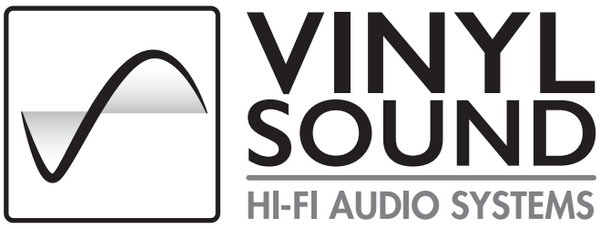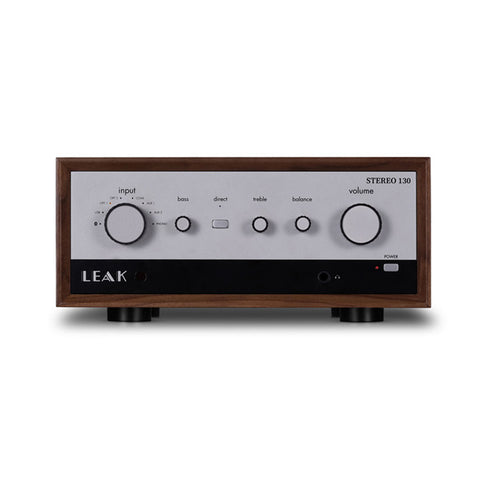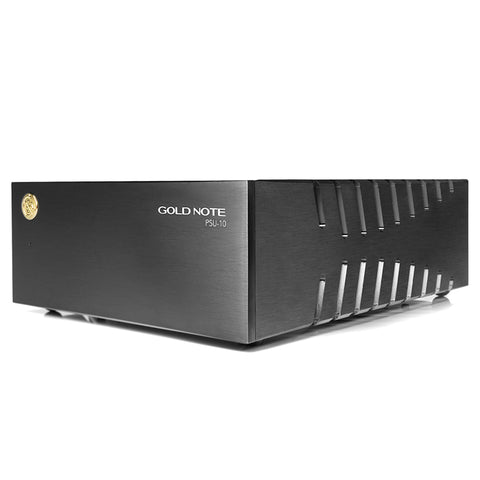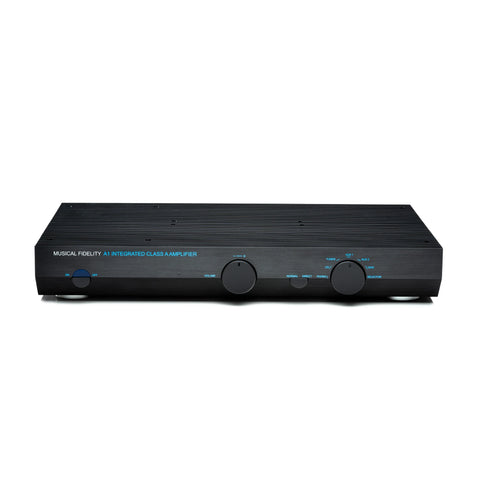Musical Fidelity M8xi - Integrated Amplifier
$9,599.00
Product Details
In 1990, Musical Fidelity made the first-ever Super Integrated amplifier: the A1000. lt received a rapturous welcome and, even today, second hand, is selling at high prices. The A1000 was the first of a long line of Super Integrated Amplifiers from Musical Fidelity. Its children: the NuVista M3, Tri Vista 300, kW500, M6/500i, NuVista 800 and NuVista 600 all were equally enthusiastically welcomed to the audiophile world. The M8xi is the latest and the best of the breed.
General Description
The M8xi is a separate preamp with two monobloc power amps sharing a common chassis. Each has its own heat sink and separate transformer. Genuinely dual mono. The preamp has its own separate power supply and is mounted close to the input sockets. Consequently, PCB tracks are very short. This elegant idea ensures that both channels' signals are ultra-low impedance the instant they get into the amplifier. This is a significant detail. Each channel has twelve big bipolar transistors - 200 amps peak to peak is easily available. The metalwork is high quality. The front panel is a custom made fine line extrusion of milspec aluminum. The custom made heat sinks have outstanding dissipation characteristics and finish. The M8xi construction has a feeling of solidity and quality.
New Circuitry
Over the last 5 years our power amp circuitry has reached a high state of development. In our never-ending quest for improving performance and customer value we have been looking for ways to improve our designs. One of the prime directives was to keep the low feedback configuration unchanged .. continue with low feedback! The problem was how to improve efficiency and performance without affecting the sound quality. If I say so myself, I think we have come up with a brilliant solution. Our new M8xi power amp design gives higher power, lower distortion, and better sound quality. Incredible but true. The output stage efficiency has been increased thus yielding about 10% more power for similar power supply voltage. More importantly, the whole driver stage is pure Class A. We believe that this innovative approach has a substantial effect on the sound quality. The sound stage appears wider whilst the micro and macro dynamics have more impact. This effect is particularly noticeable on well-recorded piano. I am sure you all know the piano is a percussive instrument but in truth, this is rarely audible on most Hi-Fi systems. Using an M8xi a piano‘s percussive nature becomes instantly obvious and jumps out of the loudspeaker. lt is a surprising and satisfying improvement to the sound quality. Vocals have more subtly, detail and presence. Large scale music has depth, width, and incredibly dynamic presentation. All in all the M8xi is a consummate all-rounder. Mostly it sounds like a small Class A amplifier with huge power.
The DAC
The M8xi also features a 5 input DAC. DACs are increasingly common in integrated amplifier designs to add convenience when connecting a variety of digital sources, so the decision was taken to build-in a DAC that would perform to a high standard, independently of the amplifier. For added integrity, the DAC features its own power supply. Based around the Texas Instruments PCM5242 TI low-distortion and low-noise DAC chip, which is also employed in many other premium products in the hi-fi industry as well as in previous Musical Fidelity products, the M8xi has 2 x coaxial (S/PDIF), 2 x optical (S/PDIF) and 1 x asynchronous USB Type-B inputs. The coaxial and the USB inputs are capable of supporting hi-res audio streams up-to 24-bit / 192kHz, and the optical input is capable of supporting up-to 24-bit / 96kHz. For maximal performance, all data streams are up-sampled and re-clocked by an internal converter to reduce jitter and remove unwanted artifacts in the sound.
Technical Performance
The M8xi delivers 550 + 550wpc into 8 ohms. It is extremely stable and very linear. The distortion is low too; lower than 0.005% in the audible frequency range of 20 Hz to 20 kHz. The M8xi has remarkable linearity and consistency. lt is unconditionally stable and will drive any loudspeaker in existence easily with ample power reserve.
Our Approach to Technical Measurements
In our view an amplifier should be completely neutral. lt is ‚a straight wire with gain‘. Easy to say but hard and complex to do. We want to stress that we do not believe that the technical performance is an end in itself. lt is a method of validating the total amplifier system concept. The aim of our circuit/PCB designs is to have low feedback and achieve complete neutrality, transparency, and great technical performance. The proof that we are on the right track is the technical performance. We think that technical performance cannot be summed up by the distortion at 1 kHz. Our view is that an amplifier has to be able to satisfy a wide range of technical requirements before it can be neutral.
Linearity
Almost all loudspeakers have complex impedance and loading curves. An amplifier must be able to maintain its voltage virtually, regardless of loading. If an amplifier cannot maintain its voltage across the spectrum, then the ultimate frequency response and distortion will be nonlinear. This is not neutrality.
Distortion
The overwhelming majority of amplifier manufacturers only talk about distortion at 1 kHz. We believe that this is only a fraction of the story. From our perspective, an amplifier must have very low distortion from 20 Hz- 20 kHz and beyond. We believe that an amplifier‘s high-frequency performance proves the total performance of the circuit and PCB layout. The M8xi distortion hardly changes from 10 kHz to 50 kHz. An outstanding achievement and validation of the circuit design and PCB layout.
Noise Ratio
Amplifiers should be quiet. If they are not, low-level detail is irretrievably lost. Also, the dynamic range is seriously compromised. Dynamic range is not just how much power an amplifier will produce, it is also how quiet it can be. Dynamic range is the total from the quietest to the loudest. The M8xi excels in this respect.
Precision Volume Control
The M8xi has a precision volume control. This ensures perfect tracking right down to a very low level. This ensures perfect tracking right down to very low levels which is unattainable with standard potentiometers. This outstanding precision is achieved by laser-trimmed substrate resistors.
Sound Quality
The M8xi is effortless, fluid, and dynamic. lt doesn‘t sound ‚loud‘. lt just sounds right. The dynamics are handled with no drama or fuss. They come and they go. There is no distortion; just pure undiluted music. lt sounds like a superb small Class A amplifier but with limitless headroom. Perfection!
M8xi - Specifications
Amplifier
- Power Output (20Hz - 20kHz): 550 Watts per channel into 8 Ohms (870W into 4 Ohms); Peak 1.6kW into 2 Ohms
- Maximum output voltage: 67 Volts RMS, 20Hz to 20 kHz; onset of clipping (190 Volts peak-to-peak)
- THD+N: <0.004% typical, 20Hz to 20 kHz (XLR)
- Signal/noise ratio: > 86dB ‚A‘-weighted (XLR)
- Input impedance: 25KΩ (RCA), 50KΩ (XLR)
- Frequency response: +0, –1dB, 10Hz to 100 kHz
- Maximum peak output current: 105 Amps
- Damping factor: 150
- Output devices: 3+3 pairs (bridged arrangement) per channel
Inputs (analogue)
- 4 pairs line level RCA connectors
- 2 pairs line level XLR (balanced) connectors
Inputs (digital)
- 2x Coax S/PDIF up to 24 bit 192kHz
- 2x Optical S/PDIF up to 24 bit 96kHz
- 1x USB B Asynchronous USB up to 24 bit 192kHz
Outputs (analogue)
- 1 pair line level RCA fixed
- 1 pair pre-out RCA variable
- 1 pair line level XLR variable
Outputs (digital)
- 1x Coax S/PDIF up to 24 bit 192kHz
- 1x Optical S/PDIF up to 24 bit 96kHz
General
- Dimensions (WxHxD): 485 x 185 x 510mm
- Max. Consumption: 2000Watts
 FREE SHIPPING OVER $199
FREE SHIPPING OVER $199 













